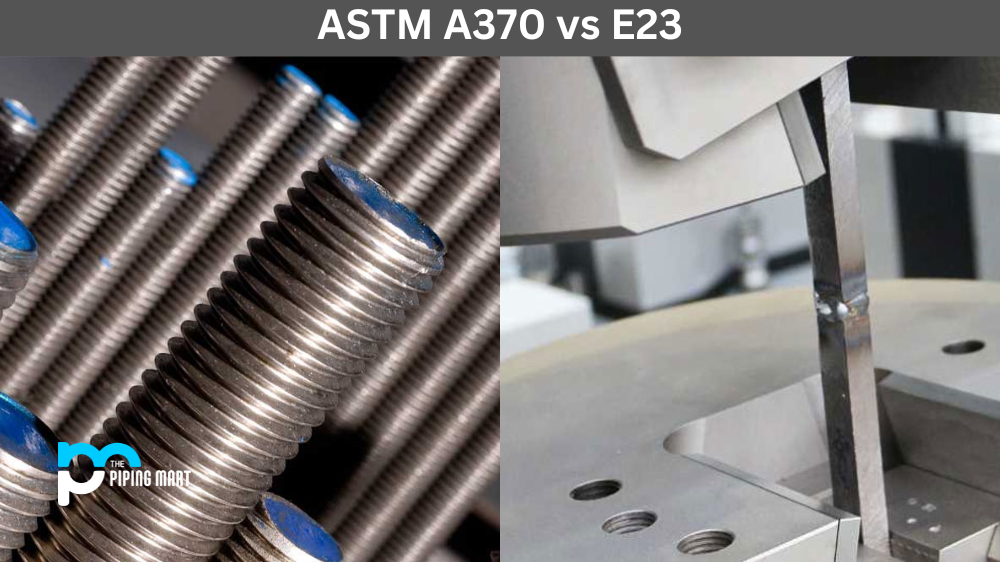Testing is essential to ensuring the quality and safety of all materials and products. Various testing standards are available, and each has unique specifications and requirements. In materials testing, the most popular bars are ASTM A370 and E23. But what exactly are they, and how do they differ? This blog post will provide a comprehensive overview of these two testing standards, their differences, and their applications.
What is ASTM A370?
ASTM A370 is a standard specification for mechanical testing of steel, stainless steel, and related alloys. It outlines the procedures for conducting these metals’ tensile, bend, and compression tests. The standard also describes the methods of measuring and recording load and deformation and calculating mechanical properties such as yield strength, tensile strength, and elongation.
ASTM A370 is widely used in the construction, manufacturing, and aerospace industries. It helps to ensure that metal materials and products meet the necessary mechanical requirements and can withstand the stresses and forces they will encounter in their intended applications.
What is E23?
E23 is a standard test method for notched bar impact testing of metallic materials. This testing method involves striking a notched specimen with a known amount of force and recording the energy absorbed during the impact. The results of this test can be used to determine the ductile-to-brittle transition temperature of a material, which is an important parameter in assessing the material’s resistance to brittle fracture.
E23 is mainly used to assess the quality and safety of materials used in the nuclear, petrochemical, and pressure vessel industries. These materials must withstand extreme temperatures and pressures without failing catastrophically, and E23 is one of the most reliable methods for testing their impact resistance.
Differences Between ASTM A370 and E23
The main difference between ASTM A370 and E23 is the type of material tested and the test performed. ASTM A370 is specific to steel, stainless steel, and related alloys, while E23 can be used for a wider range of metallic materials. Regarding the testing method, ASTM A370 involves tensile, bend, and compression tests, while E23 uses a notched bar impact test.
Another significant difference is the purpose of the test. ASTM A370 aims to determine mechanical properties such as yield strength, tensile strength, and elongation, while E23 focuses on the material’s resistance to brittle fracture. Therefore, these tests’ results will provide different information about the material being tested.
Applications of ASTM A370 and E23
As mentioned earlier, ASTM A370 is commonly used in the construction, manufacturing, and aerospace industries. It helps to ensure that metal materials and products are safe, reliable, and meet the necessary mechanical requirements. On the other hand, E23 is mainly used in the nuclear, petrochemical, and pressure vessel industries, where the materials used must withstand extreme conditions without failing.
Which Standard Should I Use?
The choice of which standard to use depends on the laboratory you are using and its requirements. If your laboratory accepts both standards, then you can choose either one. However, if your laboratory only takes one of the standards, then you must use that one.
Which Standard is Better?
There is no definitive answer as to which standard is better. Both measures are widely used and accepted by many laboratories around the world. Ultimately, the choice of which standard to use depends on the laboratory you are using and its requirements.
Conclusion
In conclusion, ASTM A370 and E23 are two important testing standards in the materials testing industry. While there are some differences between them, including the type of material tested, the testing method, and the test’s purpose, both standards play a crucial role in ensuring the safety, quality, and reliability of materials used in various industries. By understanding these standards and their applications, manufacturers and industry professionals can make informed decisions about the materials they use and the tests they conduct. Ultimately, this knowledge can improve product performance, increase safety, and enhance the quality of materials used daily.

Pipingmart is a B2B portal that specializes in metal, industrial and piping items. Additionally, we share the latest information and information about materials, products and various types of grades to assist businesses that are involved in this business.




